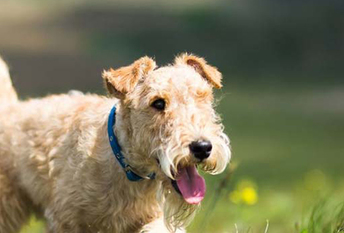Many old paintings and prints of terriers show a black and tan wirehaired terrier that looks much like the Welsh Terrier of today. The breed originated in Wales, where the dogs pitted their wits against badger, fox, and otter.
Dog shows became popular in the mid-nineteenth century. By 1884 there was a class for “Welsh or Old English Wire Haired Black and Tan Terriers,” a description that still fits the dogs of today. Dogs could be shown under either or both names.
Welsh Terriers were first brought to the United States in 1888 by Prescott Lawrence, who showed them at the Westminster Kennel Club show. They were recognized by the American Kennel Club the same year. The Welsh Terrier Club of America was established in 1900. Today the dogs rank 105thamong the breeds registered by the AKC.











